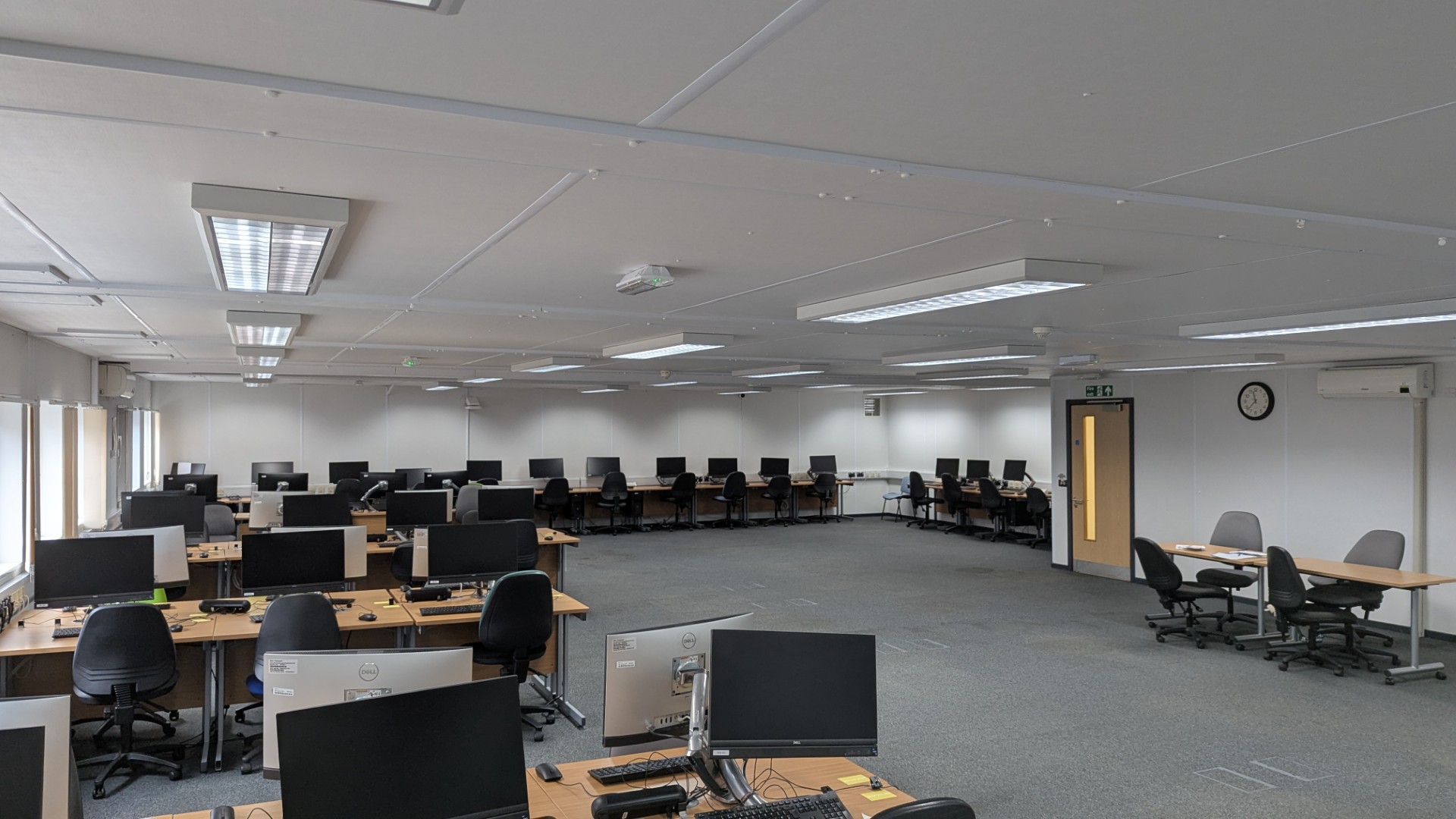Introduction
Procedural Programming is a large first-year module within EECS, running regularly with 400+ students. In two 2-hour lab slots, 200 students fill the ITL’s five rooms to access support, complete and have work marked, with assistance from lab demonstrators.
For some of our students, such as those with neurodivergent conditions, noise and busyness impacts their ability to focus on work. Other students may experience sensory overload, isolation, and depression [1].
We created a quiet room open to any student, which ran parallel to normal lab sessions. This provided a less busy space for students to complete lab activities and get work marked, alongside a dedicated teaching team who were committed to the importance of the space.
The Room
Of the five rooms in the ITL, we chose TB201, a large open room on the top floor, also containing the prayer room. Being on the top floor meant the room was out of the way, while still making it easy to find teaching staff in other rooms.

The Quiet Room
Student Thoughts
Peaceful Space
“It’s nice knowing you can go somewhere that’s less busy and much quieter to do your work. It helps me personally due to my anxiety.”
“I really like the quiet room! I enjoy having a peaceful space to work without too much noise or too many people moving around.”
“I loved it. So much easier to focus and despite having less sleep than on Friday I feel like I retained more today and wasn’t dozing off!”
“It’s a lot easier to focus when it’s quieter. It is also easier for me due to my conditions.”
“Very good very chill, strongly recommend.”
“I find the other labs too noisy for me to work in so I like having a quiet space while still being able to get help and work marked.”
Helpful Demonstrators
“Daniel’s support was very useful. I like that he understands how students disabilities can impact them and he provides support as required.”
“I’m not sure if it was intended but the choice of demonstrators in the quiet room is very useful. I believe Daniel, Roman and Fiona are very kind and soft spoken which helps a lot with anxiety as well as keeping calm and stress.”
“The demonstrators are very helpful. Daniel was kind as usual and helped me fix my code. The quiet room was an amazing idea.”
“Very friendly and kind demonstrator. So helpful!”
Noise and Overcrowding
“I enjoyed the quiet room the first week but I think people are chatting too much … I would appreciate a more library-like quiet rather than lots of chatter. I do enjoy having a quiet room to focus in but some individuals are too loud.”
“I think sometimes groups of people who do not actually use the quiet room as intended can be disrupting for those who actually need it. I think quiet conversations between a couple students is fine but some people are just too loud.”
“It gets overcrowded sometimes so I think having 2 rooms would be more efficient.”
Future Considerations
“I think it would benefit from having more demonstrators able to help if it became more popular, as some angles of the room make it hard to get someone’s attention. Overall, it is an enjoyable way to work. I would like if it was available throughout the day too, if it is not already.”
“I would like this in other modules.”
“Thank you for the room – I very much appreciate its existence!”
“[I would like] more enforcement on noise levels. not using the quiet room for (resit) exams as it means I don’t have a space to work in for that week and have to go to a noisy lab.”
Read the Report
More information in the final report: